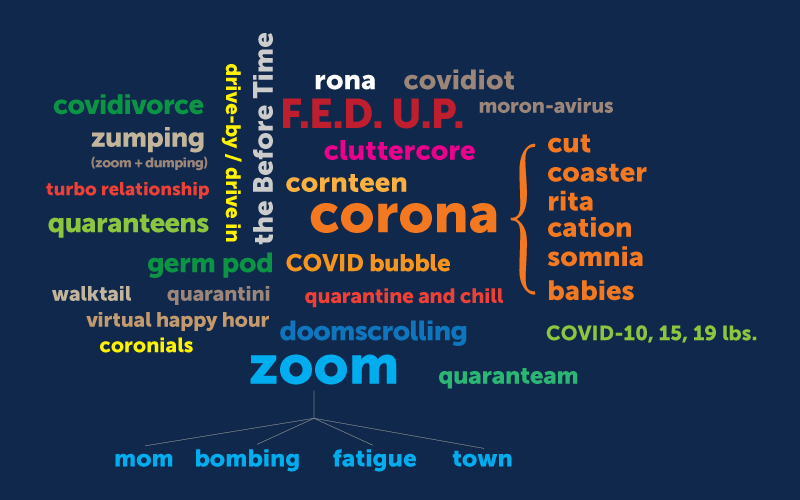
As many remain cautious about venturing outside their COVID bubbles for holiday gatherings even while vaccines begin to roll out across the United States, chances are good they also are F.E.D. U.P. (short for financial stress, emotional stress, distance from others, unpredictability and personal and professional concerns).
Merriam-Webster named “pandemic” the Word of the Year for 2020 because a new coronavirus-influenced vocabulary is seared into our collective consciousness, says Stephen J. Mexal, chair and professor of English comparative literature and linguistics at Cal State Fullerton.
“It’s as if some kind of exhaustion has set in and we can’t bear to use the extra syllables from the longer terms,” says Mexal.
Social media accelerates the new lexicon. The Zoom brand became generalized, he explains, which is a marketer’s dream and a trademark lawyer’s nightmare. Acceptance of a new phrase or word that took decades in pre-pandemic times (think how long it took “Otis Escalators” to become “escalators”) seems to take mere minutes, like the time it takes to “Zump” your partner.
Similarly, Oxford Languages reported that use of the phrase “social distancing” has been steadily declining since April.
“Either we’re doing it less or we don’t recognize the practice as unusual anymore,” Mexal says. “It’s possible that we’re using the phrase ‘social distancing’ less because we now just call it ‘normal life.’”
Mexal says one way to spot the pandemic’s influence on the English language in the future is if, months from now, phrases like “go to work,” “go to school” or “get a drink” are unclear, requiring questions on whether one would need to get into a car or get on a laptop.
“Thirty years in the future, some future version of us may look back on news articles from 2020 and think, ‘Remote work?’ What is remote work? Oh, I get it — he just means work.’”
Pandemic terms to know:
The Before Times: Pre-pandemic life
Blursday: A day of the week indistinguishable from any other during quarantine
Germ pod, COVID bubble: The group of people you socialize or live with during quarantine
Zoom fatigue: Exhaustion from back-to-back Zoom meetings
Zumping: Dumping a partner over Zoom during the pandemic
Read more about the lexicon of pandemic words here.
About Cal State Fullerton: The largest university in the CSU and the only campus in Orange County, Cal State Fullerton offers 110 degree programs, and Division 1 athletics. Recognized as a national model for supporting student success, CSUF excels with innovative, high-impact educational practices, including faculty-student collaborative research, and competitive internships in a global marketplace. Our diverse campus is a primary driver of workforce and economic development in the region and a top public university known for its success in supporting first-generation and underrepresented students. Our It Takes a Titan campaign, a five-year $200 million comprehensive fundraising initiative, prioritizes investments in academic innovation, student empowerment, campus transformation and community enrichment. Visit fullerton.edu.